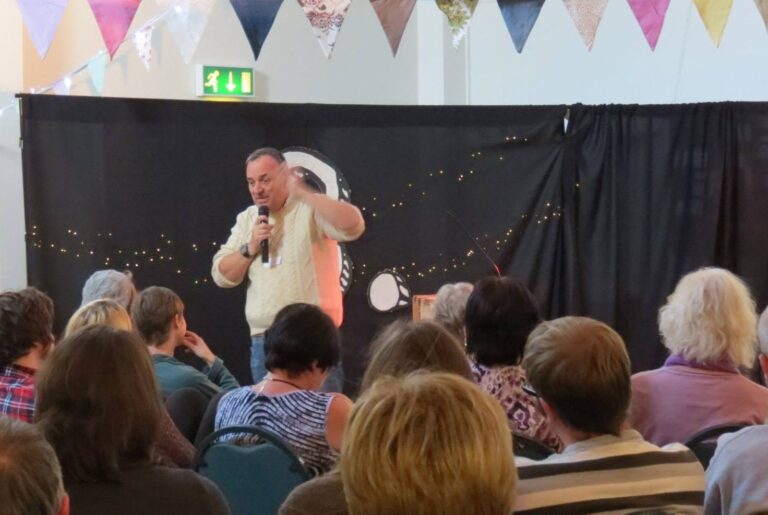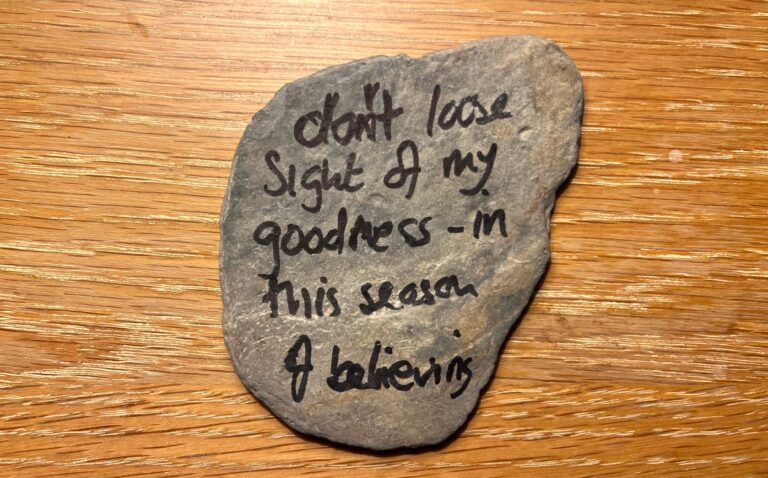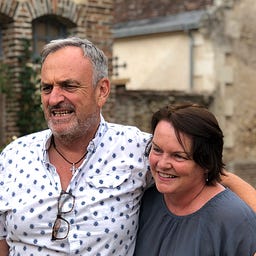The Moving Thumb of Jesus

During many hours of research for a new book on the life of Jesus, I stumbled upon a new word from the art world that I hadn’t known before. Pentimento, from the Italian, is a term used by art restorers, much aided in recent years by advances in X-ray and infrared photography. Directly related to the verb pentirsi, to repent, the expression comes into play when traces are found under the surface of a work of an earlier composition. Perhaps the world’s most valuable example is Salvator Mundi, now widely attributed to Leonardo da Vinci. When expert restorer Dianne Dwyer Modestini of New York University was asked to examine the painting, she found an outline under the left hand of Jesus that showed the thumb in a different position. This was taken as an indication that this is an original work, not a copy, as had been believed for many years. Evidence that an artist has sketched out a figure but then changed his mind on some small detail would not appear on a copy. Along with other details of brushwork etc., this lead to the painting being attributed in 2008 to Leonardo himself, rather than to one of his students. The attribution stuck, and a work that had languished in an attic and had been bought for $1,175 in 2005 became, in 2017, the world’s most expensive painting, selling at auction for $450 million.
That’s quite some profit to turn on a single pentimento. It is also a very graphic and helpful insight into what repentance really means. The emphasis here is on the fact that the artist changed their mind. What came before, an intended image, and what came after, a different painting all together, are the lead-in and the outcome of the decision, but the essence of repentance is the decision itself. This strikes me as useful in our understanding of the much-repeated biblical call to repent.
We have tended over the centuries to define repentance in terms of two quite distinct requirements. The first is sorrow, by far the most common association we make. The thesaurus on my Macbook suggests that suitable synonyms for repentance are:
remorse, contrition, contriteness, penitence, sorrow, sorrowfulness, regret, ruefulness, remorsefulness, pangs of conscience, prickings of conscience, shame, guilt, self-reproach, self-condemnation and compunction…
All of which describe the feelings associated with repentance, but say nothing of the act itself. To go back to Leonardo, these words tell us something about why he might have decided to move the thumb of Jesus, but they do not describe the act itself. The strongest – and therefore most confusing – link is with penitence, which again describes the emotions I attach to my repentance, but not the decision itself. This confusion leads to churches insisting that the most important aspect of repentance is that you feel really bad about the things you’ve done. In extreme cases you can demonstrate the depth of your ill feeling by crawling on broken glass or whipping yourself. In more normal circles you just have to show in some way that you are really, really sorry. Repentance = feeling bad about myself. Which is a hard act to maintain in a postmodern culture in which we are extensively taught not to feel bad about ourselves. Does that mean we can no longer repent?
The second requirement we place on the penitent sinner is a visible change in behaviour. To repent means to change my way of living. For Leonardo, it means a whole new painting. Again, though, this describes something adjacent to repentance, but doesn’t illuminate the act itself. When John the Baptist insisted that those he baptised should “Bear fruits in keeping with repentance” (Luke 3:8 ESV) he was recognising this distinction. There is the act of repentance, and then there are the fruits of repentance – the decision to change the composition, then the new picture that emerges.
The problem with religion’s emphasis on these two requirements – the feelings that lead to repentance and the fruits that flow from it – is that they distract us from an understanding of the act itself. So obsessed are we with the need to show remorse or with the pressure to really change that we pay scant attention to the vital act that links the two.
What then is the nature of the bible’s call to repent – the missing action that leads from the feelings to the fruits? It is, in the simplest possible terms, a choice to turn. Paul explains in the course of his defence before King Agrippa that he,
“declared first to those in Damascus, then in Jerusalem and throughout all the region of Judea, and also to the Gentiles, that they should repent and turn to God, performing deeds in keeping with their repentance.” (Acts 26:20 ESV)
Did you catch that tiny phrase at the centre of Paul’s definition – repent and turn to God? Repentance is proven, yes, by a change of behaviour, and may well be accompanied, as it was for Paul himself, by deep sorrow and regret, but the core of the act – the hinge at the heart of it – is the turning. Not just a turning from something – a particularly regretful pattern of behaviour, for example – but a turning to someone. Repentance is relational. This is the message at the very core of the New Testament. To repent is to turn towards God. It is a change of posture: where your back has been toward your maker, you now turn to face him. This is beautifully illustrated, of course, in Jesus’ most profound repentance parable. The prodigal son, knee-deep in the degradation and desperation of the decisions he has made, when he “comes to himself” says, “I will arise and got to my father.” (Luke 15:17,18 ESV) This is true repentance – the decision to turn, through 180 degrees if need be – to face the father you have been running from. Without this choice – without the core relational element – the remorse we express and the changes we attempt will not add up to the biblical picture of repentance: they will not, in fact, add up at all.
Let me offer one imagined example to try and flesh-out this picture. Let’s assume you have a habit or compulsion that you have decided is unhelpful for you. For the sake of illustration, let’s make it alcohol. You are not an addict by any means, but you have been over-consuming and are seeing the impact on your life and on those close to you. So you decide to repent. This involves a measure of sorrow and regret – you allow yourself to feel the remorse of having left this habit unchecked in your life. It also involves a decision to change: I’ll try harder; I’ll drink less; I’ll seek a different path. All of which is positive and good, but none of which fits the biblical picture of repentance. Why not? Because the essential turning – I will arise and go to my father – is missing. What might that turning look like, if it were re-inserted to the centre of this process? In this example, it might involve saying:
“I have been seeking comfort, consolation and the healing of my trauma in overindulgence in alcohol. Instead, I will turn to my Father, and seek these things in him.”
Is the difference as clear to you as it is to me? In the one case there is regret and the desire to change, for sure, but in the other there is also a relationship that makes change possible. It is this re-connection; the person-to-person reconciliation, that lends to repentance its substance. Perhaps this goes some way to explaining why the father in Jesus’ parable is so happy to see his son; why his declaration that the boy ‘was lost and is found’ has such resonance – because the boy has turned from a posture in which he could not access the grace and healing he needs to a posture in which he can. There is hope, because his heart has made the journey home.
There are two other pictures of repentance in the bible that illustrate how fine; how precise this act of turning is. In one a despotic king lost to seven years of arrogance and madness is restored by the simple act of “lifting his eyes to heaven” (Daniel 4:34 ESV). In the second a dying thief, justifiably punished for his many wrongs, uses his last breath to say, “Jesus, remember me” (Luke 24:32 ESV). In both cases, the accretions and apparatus we so often add to repentance are removed: we are left with the pure and simple act of turning – and that act is enough.
Why does this precision matter so much? Because whilst the sorrow that accompanies repentance – the remorse we show – can have value in and of itself it doesn’t add to the substance of repentance. Equally, the changed behaviour that issues from a decision to repent – the fruit that flows from it – has real and lasting value, but doesn’t constitute in itself an act of repentance. This privilege is reserved for the one, precise act at the centre of the equation: the choice to turn to our father. Only this relational choice denotes biblical repentance. It’s not about how we feel or what we do – it’s all about who we turn to.
Is this good news? Not for the religious obsessive, who desires by the extravagant demonstration of remorse to win over a recalcitrant deity. Not for the self-help hero, who believes that only upward pressure applied to boot-straps can ultimately bring salvation. But for the rest of us; who know we need help; who long for change but don’t know how to create it; for the great unwashed; the lost; the sinner, this is very good news indeed.
Jonathan Helser, in the song First Love, puts it this way:
“I thought I had to be strong
To somehow earn this love
But the truth, has been all along
Only have to fall!
…. All the way back to the Father”
Image: Leonardo da Vinci, Public domain, via Wikimedia Commons
Track: Jonathan and Melissa Helser – First Love (Official Lyric Video)
Thanks for reading. If you find these thoughts helpful, do please consider supporting us through a paid subscription. Every blessing…







